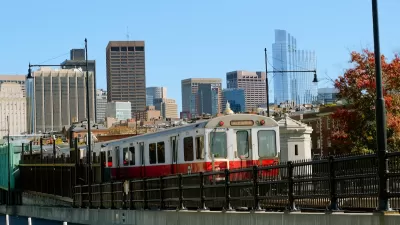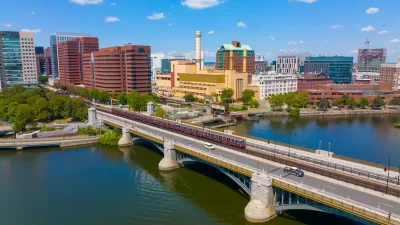A month-long shutdown of one of the region’s busiest lines prompted the city to experiment with temporary bus lanes, reoriented streets, and free bikeshare.

When Boston’s busy Orange Line shut down for a month this summer for long-awaited repairs, commuters braced themselves for massive disruptions. Governing’s Jared Brey spoke with Boston’s chief of streets, Jascha Franklin-Hodge, about the city’s strategies and what they learned.
To give subway riders alternative options, the city responded by “dedicating bus-only lanes, changing the direction of streets or closing them to cars, creating temporary bike lanes, designating queuing areas for shuttles, offering free 30-day passes to its Bluebike bike-share system and many other adjustments.” During the shutdown, Boston’s Bluebikes bikeshare system saw its highest ridership ever.
Franklin-Hodge admitted the line never should have gotten to the point where the shutdown was necessary. “I hope it leads to a real renewed commitment on the part of MBTA leadership to never allow the system to get to a point where we have to shut it down for 30 days.”
Franklin-Hodge also noted that the city should “try more stuff” on a short-term basis to test innovations and understand how they function in the real world. “I think it’s a reminder that we can move quickly, we can try things, we can learn from them, we can adjust them, we can use temporary materials in a lot of cases to refine a design rather than going straight to permanent, and if our goal is supporting transit, and it is, then we have to not lose that speed and that sense of urgency.”
FULL STORY: What Boston Learned About Transit Planning from a Subway Shutdown

Alabama: Trump Terminates Settlements for Black Communities Harmed By Raw Sewage
Trump deemed the landmark civil rights agreement “illegal DEI and environmental justice policy.”

Planetizen Federal Action Tracker
A weekly monitor of how Trump’s orders and actions are impacting planners and planning in America.

Why Should We Subsidize Public Transportation?
Many public transit agencies face financial stress due to rising costs, declining fare revenue, and declining subsidies. Transit advocates must provide a strong business case for increasing public transit funding.

Understanding Road Diets
An explainer from Momentum highlights the advantages of reducing vehicle lanes in favor of more bike, transit, and pedestrian infrastructure.

New California Law Regulates Warehouse Pollution
A new law tightens building and emissions regulations for large distribution warehouses to mitigate air pollution and traffic in surrounding communities.

Phoenix Announces Opening Date for Light Rail Extension
The South Central extension will connect South Phoenix to downtown and other major hubs starting on June 7.
Urban Design for Planners 1: Software Tools
This six-course series explores essential urban design concepts using open source software and equips planners with the tools they need to participate fully in the urban design process.
Planning for Universal Design
Learn the tools for implementing Universal Design in planning regulations.
Caltrans
Smith Gee Studio
Institute for Housing and Urban Development Studies (IHS)
City of Grandview
Harvard GSD Executive Education
Toledo-Lucas County Plan Commissions
Salt Lake City
NYU Wagner Graduate School of Public Service





























